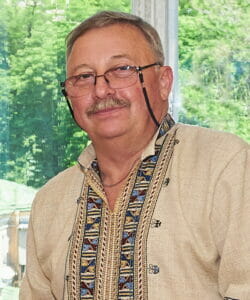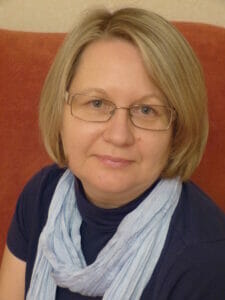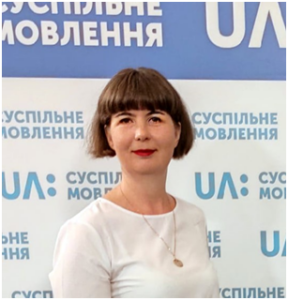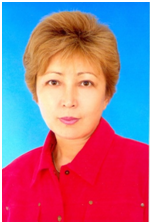Research Grants 2022
The HREC Research Grants Competition is held annually to support academic research on the Holodomor, the publication of research results, the preservation of materials, and the organization of and participation in academic venues. Each year, a new thematic focus is established, though proposals for other topics are considered. The applications are reviewed by a committee of scholars and HREC associates.
-
2022 HREC Research Grants Competition
The Holodomor Research and Education Consortium (HREC) announces its 2022 Research Grants Competition. Grants are intended to support research that expands our knowledge and understanding of the Holodomor; publication and translation of research results; preservation of and increasing access to materials; and organization of and participation in academic forums. Examples of research that could be supported include the policies of foreign governments during collectivization and the Holodomor; the fate of various groups living in Ukraine (ethnic, social, etc.); diaspora communities and their kin in Soviet Ukraine; and the Holodomor at the national and sub-national levels (eg., oblasts, raions, villages). Grants to individuals will not exceed C$7,000.00, with most grants ranging from C$1,000.00 to C$3,000.00 in the past years. HREC also accepts proposals for larger collaborative projects that engage scholars and institutions from both in and outside Ukraine.
Deadline: April 15, 2022
Individual Projects 2022
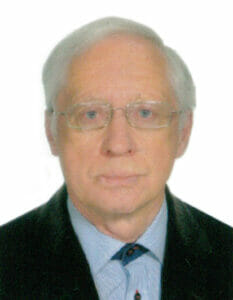
Bohdan Chyrko
V.I. Vernadsky Tavrida National University, Kyiv
“Collection of Documents for the Study of the History and Socioeconomic Conditions of the German National Minority in Ukraine during the Holodomor”
This project will result in a collection of documents relating to “The German Ethnic Community in Ukraine during the Holodomor Era” in the period 1930-1931. The project is a continuation of research that began in 2021, during which a collection of documents was prepared for the period 1928-1929. The documents cover topics including the introduction of grain procurement, collectivization, disarmament, social pressure on the peasantry, and manifestations of hunger and starvation in the German agricultural colonies in Ukraine.

Nani Hohokhiia
Luhansk Taras Shevchenko National University, Starobilsk
“Children in Mass Government Campaigns on the Eve and during the Holodomor”
This study examines the ways in which Soviet authorities before and during the Holodomor involved children in agitation and political campaigns as a tool of indoctrination. The project will result in a source base of archival documents, oral sources, and children’s press and literature. Working from these sources, Hohokhiia plans to identify the critical features of government policy regarding children from various regions of Ukraine, employing the tools of social history, history and anthropology of childhood, history of everyday life, and discourse analysis.
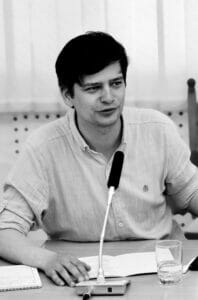
Mykola Horokh
V.V. Tarnovsky Chernihiv Regional Historical Museum
“Visual Sources from the Holodomor Era Found in Museums of Chernihiv Oblast”
This project will collect and document Holodomor-related visual sources from the 1920s and 1930s, primarily photographs, from museums in Chernihiv oblast. An analysis of these sources will shed light on the inner workings of Ukrainian everyday life in the context of the Holodomor, collectivization, dekurkulization, and resistance to Soviet authority. The broad chronological scope of the search will deepen knowledge of the socio-economic, political, and cultural aspects of life in Soviet Ukrainian society at the time of the Holodomor.

Yulija Hryshchenko
Institute of History of Ukraine, National Academy of Sciences of Ukraine, Kyiv
“Regional Press as a Source for the Study of Everyday Life in Soviet Ukraine during the Holodomor”
This aim of this project is to analyze regional press to expand understanding of how the representatives of different ethnic minorities perceived economic and social policies carried out by the Soviet-party leadership. The study will consider how representatives of ethnic communities demonstrated their position to both internal and external audiences, how they symbolically imagined their place in Soviet society, and how the perception of their “economic identity” was formed. In a broader sense, the study will illustrate at the internal micro level the interrelationship between Soviet ideology and the inner life of ethnic groups, their economic development, and the cultural environment.

Ihor Shuiskiy
Regional Information Center of the Kharkiv Regional Council
Preparation for Publication of a Collection of Annotated Documents "All-Ukrainian Torgsin Office in Kharkiv Region in 1931–1936"
This project will prepare for publication a collection of annotated documents from the Kharkiv oblast’s all-Ukrainian Torgsin office for the period of 1931-1936. As a scholarly editor of the “Regional Information Center” of the Kharkiv oblast council, Shuiskiy and his team are engaged in preparation of the series “National Book of Memory of the Victims of the Holodomor of 1932-1933 in Ukraine. Kharkiv Region”; and “Rehabilitated by history. Kharkiv Region.” His academic interests include the study of the Holodomor and political repression in Soviet Ukraine.

Serhii Vodotyka
Kherson State University
“Collectivization and the Holodomor as a Social Experiment of Stalin’s Totalitarian Regime: The Liquidation of Traditional Groups of Ukrainian Peasantry”
The aim of the project is to prepare a historical, sociological, political and legal assessment of the actions of the Soviet authorities aimed at destroying the traditional social groups of the Ukrainian peasantry (poor, middle, wealthy) and turning them into "collective farm peasantry" -- the disenfranchised majority of the population of Ukraine, at the expense of which Stalinist modernisation was carried out.
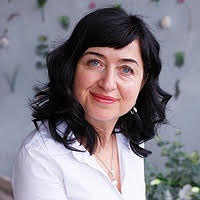
Larysa Zasiekina
Lesya Ukrainka Volyn National University, Lutsk
“Psychology of the Holodomor: From Collective Trauma to Collective Resilience”
This project examines Ukrainian identity, the psychological consequences of the Holodomor and the mechanisms of collective resilience following the man-made famine. It will investigate behavioral patterns and common mental and emotional traits of victims, perpetrators, rescuers, and bystanders, as well as family/community environments as mediators of collective trauma and resilience. Zasiekina will explore whether community-based approaches lead to collective healing following collective trauma and whether the psychological patterns of the Holodomor will repeat themselves in the present-day Russian aggression. Results will be published in three academic articles in peer-reviewed journals and as a book, “Psychology of the Holodomor: From Collective Trauma to Collective Resilience.”
Collaborative Projects 2022
Hennadii Boriak
Institute of History of Ukraine, National Academy of Sciences of Ukraine, Kyiv
Oksana Yurkova
Institute of History of Ukraine, National Academy of Sciences of Ukraine, Kyiv
Kateryna Lobuzina
Vernadsky National Library of Ukraine, National Academy of Sciences of Ukraine, Kyiv
“Identifying Holodomor Era Visual Documents in Kyiv Oblast” (project continuation)
This project will increase access to historical photographs and other visual sources from the regions of Ukraine that were affected by the Holodomor. The project is a continuation of work begun in 2020, during which researchers visited more than 60 museums, developed a model survey, identified approximately 1,200 Holodomor-era photos, digitized and systemized the collected photos, and began publishing digital images with metadata on the website http://holodomor-era.history.org.ua/. In 2022, the researchers will update the website, upload the collected images, add metadata, write a paper about the project, and publish a collection of manuscripts by Holodomor witness Oksentiі Musiіenko.
Nataliia Kuzovova
Kherson State University
Albina Zhanbosinova
L.N. Gumilyov Eurasian National University, Nur-Sultan, Kazakhstan
“The Holodomor in Ukraine and the Aşarşylyq in Kazakhstan: A Comparative Analysis”
The team will conduct a comparative analysis of the causes, chronological framework, main events, and consequences of the Holodomor in Ukraine and Aşarşylyq in Kazakhstan. The researchers will address Russian propaganda that denies the genocide of Ukrainians and Kazakhs, analyzing the historiography of the problem and documentary materials on the history of the Holodomor in Ukraine and Kazakhstan. The results of will be published as articles in international academic journals.
Non-Residential Grants 2022

Bohdana Dub
Cherkasy National University
“Holodomors of 1921-1923, 1932-1933, 1946-1947 and the World Economy”
The goal of this research is to investigate the global economic consequences of the man-made famines orchestrated by the Soviet government in Ukraine in the 1920s-1940s. For example, food exports from the USSR did not decrease during the Holodomor, while the collapse of agriculture in the US in the 1920s and 1930s was due to oversupply in the market coupled with falling prices (wheat prices fell by 80 percent). The research will consider the impact on trade, the stock market, and the world economy in general.
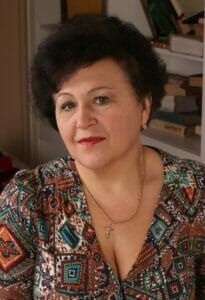
Olha Honcharova
Hryhorii Skovoroda Kharkiv National Pedagogical University
“The Angel Factories: Collective Farm/State Farm Orphanages (Patronaty) for Homeless Children of the Kharkiv Region during the Holodomor and post-Holodomor Period”
This project explores the issue of orphanages (patronaty) during the Holodomor. The project will identify and analyze materials from periodicals of the late 1920s to early 1930s newspapers and magazines related to the system of orphanages in villages and highlight the organizational foundations of the system of collective/state farm orphanages for homeless children. It will also clarify the tasks of brigades made of Komsomol members and members of the “Friends of Children” organization that worked to prevent homeless people from rural areas from departing for the cities; examine the conditions of children in orphanages, including provision of food and the attitude of staff towards children.
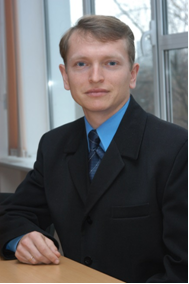
Liubomyr Hubytskyy
State University of Trade and Economics, Kyiv
“Organized Assistance to the Starving in Ukraine by Ukrainians in Zakerzonnia in 1932-1933”
This project explores the attitudes and reactions of, and support provided, by various groups and individuals of Zakerzonnia in response to the Holodomor of 1932-1933. Some actors and organizations to be examined include the Zakerzonian Ukrainian population, the Emigration Committee for Aid, representatives of Ukrainians in the Polish government, representative offices of Ukrainian political parties, and the Ukrainian Greek-Catholic Church. The research also looks at requests of Ukrainians (from the USSR) for material assistance and messages of refugees from Ukraine. The results of the study will be made known in journal articles, conference publications, and presentations.

Serhii Humennyi
Taras Shevchenko National University of Kyiv
“Illegal Migration and Smuggling on the Soviet-Polish Border”
The purpose of this project is to create a comprehensive study of migration and smuggling activities on the Polish-Soviet border during the Holodomor of 1932-1933 and its contribution to increased political tensions between the Republic of Poland, the Western Ukrainian public, and the USSR. The author will examine illegal migration of the population from the USSR to Poland during the Holodomor and the “second migration boom” that was inspired by the USSR with the subversive purpose of putting pressure on Polish statehood. The researcher will investigate the existing source base to examine characteristic features of the attitudes of state structures in the Republic of Poland towards illegal migrants from the USSR during the Holodomor and analyze the phenomenon of illegal migration on the Soviet-Polish border.

Yurii Karapulin
Kherson State University
“Total Collectivization, the Holodomor, and the Experience of the Inhabitants of the Jewish Agrarian Settlements of Southern Ukraine”
This project looks at the history of Jewish agricultural settlements in Southern Ukraine during collectivization and the Holodomor. Implementation will include research in regional and central libraries and archives and memoirs of Holocaust survivors (from the Shoah Foundation collection), who had pre-war experience on Jewish collective farms. Using the micro-historical approach, the author seeks to investigate the situation in Jewish agricultural settlements that existed in the regions of modern Kherson and Mykolaiv.

Valentyna Kharkhun
Nizhyn Mykola Gogol State University
“Trauma on Display: Exhibiting the Holodomor in Ukrainian Museums”
This research project aims to identify the significance of Ukrainian museums in post-Holodomor memory creation and to analyze the ideologies and stylistic expressions employed by museums to represent victimhood. The study will examine approximately ten museums of varying statuses (national, state, local) and their thematic exhibition projects portraying the Holodomor. The author will use narratology and a comparative approach to identify the regional and genre specifics of the Holodomor representations in the museums. This research will contribute to the humanities an innovative, comprehensive study of perceptions of the Holodomor and its reflection/influence on national memory politics regarding victimhood.
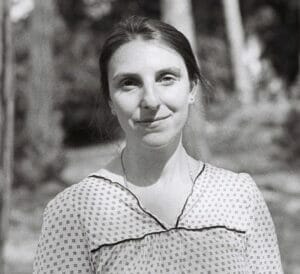
Oksana Lavri-Honcharova
Holodomor Research and Education Centre, Kyiv
“The Phenomenon of Denunciation as an Element of the Communist Value System during the Holodomor (the late 1920s-1930s)”
This study will investigate the phenomenon of denunciation as an element of education and the formation of Soviet society, examining ideology, state policy, and the psychological state of society based on archival materials, memoirs, diaries, and press records. The primary focus will be the socio-psychological and cultural consequences of the Holodomor and Stalinist repressions that led to the transformation of Ukrainian society. The study will be published in Holodomor Studies and presented at the international conference “The Era of Holodomor: Reconceptualization in the Context of Research Strategies of Local Study and Local History.”

Sergii Miroshnychenko
National Library of Poland, Warsaw
“The Holodomor in Ukraine`s Politics of History between 1991 and 2021”
The study will investigate how the Holodomor became a political tool in Ukraine between 1991 and 2021 by looking at how the Holodomor influenced the development of the politics of history and how the Ukrainian authorities implemented the politics of history during different presidencies, the Holodomor’s place in these implementations, and the reactions of Ukrainian society. Sources will include archive documents on the Holodomor and the legal actions of the Ukrainian authorities.
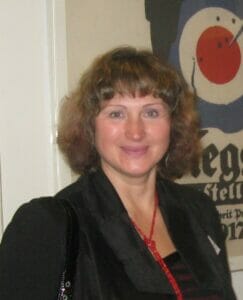
Olga Ryabchenko
H.S. Skovoroda Kharkiv National Pedagogical University
“Letters from Starving Soviet Ukrainians Asking for Help (1933-34): Exhibits in Berlin”
The objective of this project is to identify and analyze letters requesting monetary or food aid from Soviet citizens, residents of Ukraine, that were written to public organizations and private individuals in Germany before, during, and after the Holodomor. The research involves searching through German periodicals of the first half of the 1930s and conducting an initial analysis of the documents to shed light on the degree of awareness of the famine abroad, particularly in Germany, as well as the mood and reaction of German citizens to the situation in Ukraine.
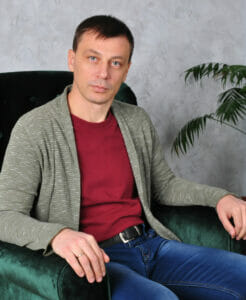
Yurii Shchur
Zaporizhzhia National University
“Three Holodomors in Zaporizhzhia Region”
The research focuses on the history of the Ukrainian liberation movement and the famines in the Zaporizhzhia region of 1921-1923, 1932-1933, and 1946-1947 in order to expand understanding of both the Holodomor and its impact on the struggle for Ukrainian self-determination, in particular, in the Zaporizhzhia region. Archival files and materials of the Soviet state security agencies, narrative sources, and internet resources will be analyzed and published in an article.

Volodymyr Shevchenko
Babyn Yar Holocaust Memorial Center, Kyiv
“Holodomor in the Reports of Foreign Diplomatic Missions in the Ukrainian SSR (on the materials of ODPU)”
This project will produce a comprehensive compendium and analysis of sources from diplomatic missions on the territory of the Soviet Union reflected in reports and private letters of diplomats who were under the full informational and physical surveillance of the ODPU. The ODPU had access to information about the famine due to its penetration at the level of secondary positions of service personnel and its total control over diplomatic mail, actions, and contacts of foreign diplomats.

Liudmyla Shvets
O.M. Beketov National University of Urban Economy, Kharkiv
“Blueprint for the Construction of Garden Theatres in Large Villages in the Ukrainian SSR during the Holodomor: Origins of the Idea and Results of Its Implementation”
The project will consider whether the construction of garden theatres in Ukrainian villages in 1933 ostensibly to promote a “cultural revolution” in actuality served as a tool to exterminate the Ukrainian population by collecting funds for construction from hungry villagers. Research includes a study of the historiography of the issue through digitized Ukrainian periodicals for the period of 1933 to 1934.
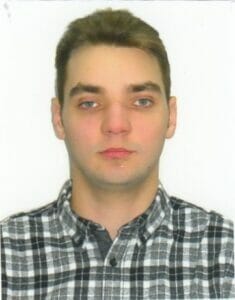
Maksym Snihyr
National University of Kyiv-Mohyla Academy and Free University of Berlin.
““From Ukraine to us”: movement of population into Romania during the Holodomor”
The project will investigate patterns of movement along the Soviet-Romanian border during the Holodomor within the framework of social history, drawing on Lynne Viola’s concept of resistance. The project will make use of materials from the State Archive of Odessa region, the National Archives of Romania, and the Archives of the National Council on Study of the Archives of the Securitate. The results will be published in an article on migration patterns and solidarity. In addition to contributing to scholarly discussion on the topic of population movements during the Holodomor, this study will assist in mapping less explored movements along the Romanian-Soviet border.
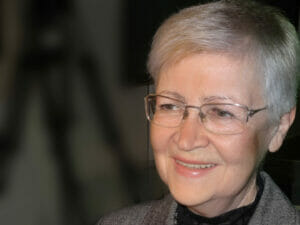
Eleanora Solovey – Honcharyk
Taras Shevchenko Institute of Literature, National Academy of Sciences of Ukraine, Kyiv
Ukrainian Translation of Lev Kopelev's And Madest Thyself an Idol ("I sotvoril siebie kumira")
The project will result in a translation of Lev Kopolev’s memoir “And Madest Thyself and Idol” (“I Sotvoril Siebie Kumira”) into Ukrainian.
Lev Kopelev (1912-1997), born in Kyiv, was a well-known dissident and human rights defender. His memoir contains valuable evidence pertaining to the Holodomor of 1932-1933 and will be of interest to Ukrainian researchers and the broader Ukrainian public.
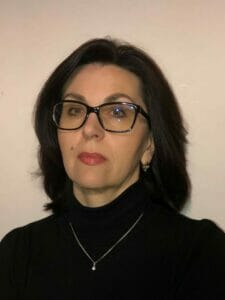
Larysa Yakubova
Institute of History of Ukraine, National Academy of Sciences of Ukraine, Kyiv
“Instruments of the Holodomor in the Formation of Mass Conscience of the Totalitarian Age: The Case of National Minorities”
The project will test the hypothesis that famine perpetrators ingeniously used inter-ethnic contradictions, stigmas, and prejudices to deepen divisions both between neighboring ethnic communities and between individuals within the communities themselves. In addition, the study will consider famine killings and post-famine trauma as tools for the deformation of mass consciousness. This hypothesis is based on Larysa Yakuboba’s research conducted in 2020/2021 with Professor O. Wolowyna (“Estimation of Urban and Rural Holodomor Losses of Five Nationalities in Soviet Ukraine”) on the national village councils and districts that existed in the second half of the 1920s and 1930s and their relationship to Bolshevik authority. Archaeographic commentary to previously collected sources on this issue will be prepared prior to publication, and an article will be published in in Ukrainsky Instorychny Zhyrnal.
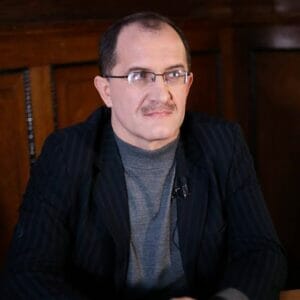
Hennadii Yefimenko
Institute of History of Ukraine, National Academy of Sciences of Ukraine, Kyiv
“Demography of the Holodomor Period in the Assessment of Specialists of the 1930s: Forecasts and Estimates of Losses”
This project will examine demographic losses from data published in books and articles from the 1930s and “forecasts” by demographers of the time. The result will be published as an article and in the second edition of the book Demographic Consequences of the Holodomor of 1933 in Ukraine. All-Union Census of 1937 in Ukraine: Documents and materials, published in Kyiv in 2003 in co-authorship with Stanislav Kulchytsky.
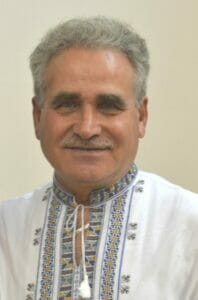
Ivan Zabiiaka
Taras Shevchenko National University of Kyiv
“Talalaivka (Velyki Bubnivtsi) Raion of Chernihiv Oblast in the Conditions of Stalin’s “Revolution from Above” and the Holodomor: A Historical and Documentary Study”
The project examines the history of the Holodomor in the Talalaivka (Velyka Bubnivka) raion of Chernihiv oblast and its individual settlements. The research will also focus on the study of socioeconomic and political factors that caused the Holodomor and the impact of the authorities’ actions on the spiritual and cultural life of the local population. The study will result in the publication of a collection of Holodomor survivor oral and written testimonies as well as secondary accounts from subsequent generations who heard stories about the Holodomor.
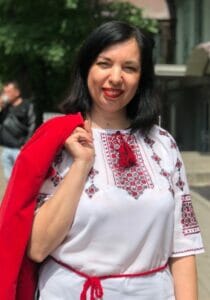
Tetiana Zabolotna
Institute of History of Ukraine, National Academy of Sciences of Ukraine, Kyiv
“The 1932-1933 Holodomor as Reflected in Kyiv Newspapers during the Nazi Occupation (1941-1944)”
This project studies the causes and consequences of the 1932-1933 famine as reflected in newspapers published in Kyiv during the Nazi occupation. The researcher proposes to analyze the subject matter, content, and influence of occupation period periodicals in studying the famine. This analysis and publication of materials will enrich our understanding of the evolution of the memory of the Holodomor in different periods of Soviet history.
Iryna Zakharchuk
Rivne State University of the Humanities
“Codification of the Imperial Myth and Imperial Worldview: The Case of Ukrainian Literature About the Holodomor”
The project focuses on revealing the methods of codification of the Soviet empire and imperial myths in the texts of Ukrainian literature and clarifying the impact of the Holodomor on processes of the modernization and decolonization of Ukrainian literature. As well, the project will look at how, from the perspective of modern decolonization cultural practices, literary texts about the Holodomor supply grounds for asserting the need to reboot the canon of Ukrainian literature. Soviet and émigré literature, as well as works of art published during the period of Ukraine’s independence and Russia’s war against Ukraine (2014-2022), are included in the research.
